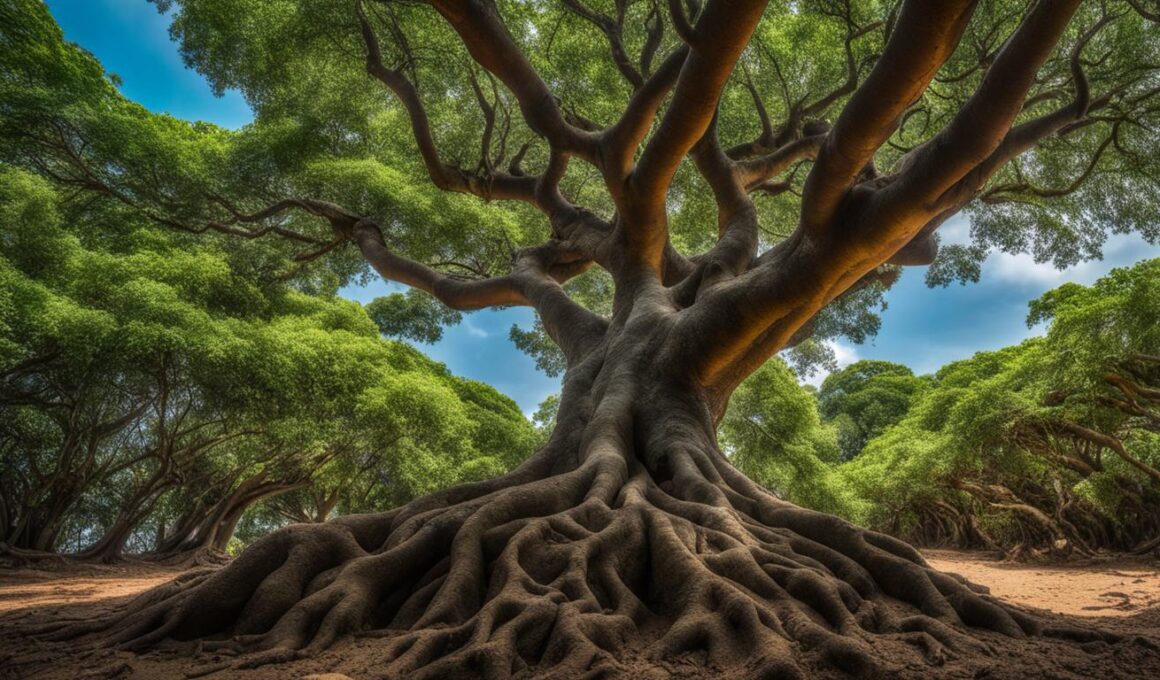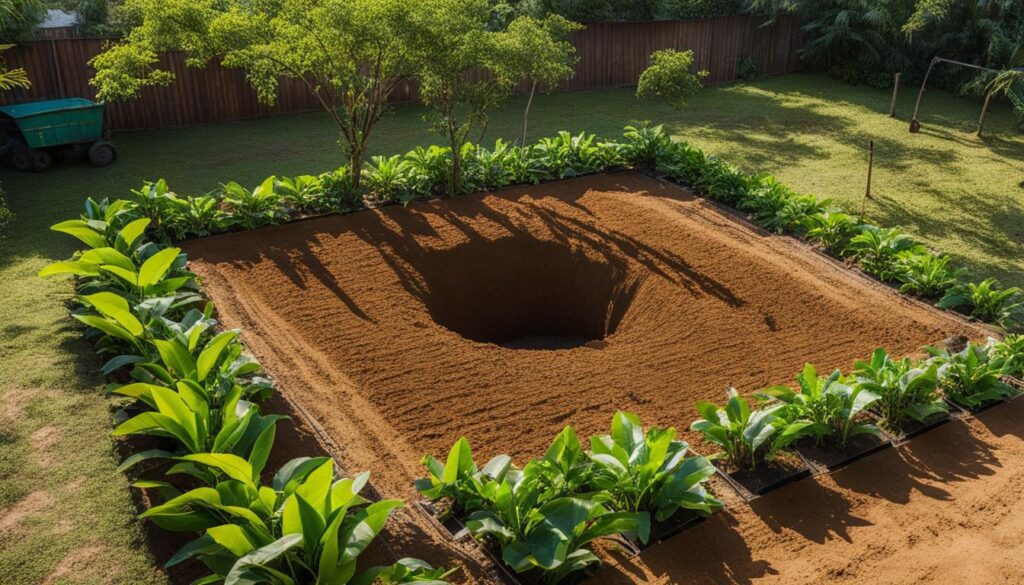Welcome to the world of tropical delights! If you’ve ever dreamed of growing your own mango trees and enjoying the delicious fruit right in your backyard, you’re in luck. In this article, we’ll explore the mango tree growing zone and ideal climate conditions in the United States.
The mango tree growing zone is limited to tropical climates. In the US, you can find mango tree growing zones in the southernmost portions of Florida and California, as well as in Hawaii and Puerto Rico. These regions provide the perfect environment for mango trees to thrive and produce an abundance of sweet, juicy fruits.
It’s important to note that mango trees require specific conditions to flourish. Extended exposure to temperatures below 30°F can be detrimental to the tree, as mango tree cold tolerance is low. Therefore, it’s crucial to ensure that you’re planting your mango trees in the appropriate climate zone.
Despite the limited mango tree growing zones in the US, the cultivation of mangos is widespread across the globe. This allows Americans to enjoy this tropical fruit year-round, even if they don’t reside in the ideal growing regions.
In addition to considering the growing zone, it’s essential to know some key facts about mango trees. On average, mango trees can reach heights of 100 feet or more, with a canopy of 35 feet or more. However, in cultivation, mango trees are generally pruned to a more manageable height for easier harvest.
Furthermore, it takes approximately four months for the mangos to mature on the tree before they’re ready for harvest. So, if you’re planning to embark on the rewarding journey of growing mango trees, ensure that you have enough space, suitable climate conditions, and patience to enjoy the fruits of your labor.
How to Grow Mango Trees
Mangoes are tropical fruits that thrive in USDA hardiness zones 10-11, making them an ideal choice for growing in warm climates. If you are considering planting mango trees, here are some important steps to follow:
1. Choose the Right Spot
Plant mango trees in a location that receives full sun for at least six to eight hours a day. This ensures optimal growth and fruit production. Additionally, select an area with fertile, well-draining soil to provide the necessary nutrients and prevent waterlogged roots.
2. Give Adequate Room
Mango trees can grow over 60 feet tall, so it’s important to plant them away from structures and give them enough space to spread out. Adequate room allows the tree to develop a healthy root system and maintain a sturdy posture.
3. Water Regularly
When establishing a young mango tree, deep and regular watering is crucial. This helps the tree develop a strong root system, which is essential for its long-term growth. As the tree matures and establishes deeper tap roots, the water requirements may decrease.
4. Fertilize Wisely
Regular fertilization is important to provide the necessary nutrients for the mango tree’s growth and fruit production. Use a balanced fertilizer formulated for fruit-bearing plants, and apply it according to the manufacturer’s instructions. Focus on fertilizing during the growing season to support healthy development.
5. Prune Carefully
Pruning mango trees serves multiple purposes, including removing broken or diseased branches, improving airflow, and maintaining a manageable size. However, it’s important to avoid contact with the tree’s leaves and branches as they contain urushiol, which can cause a rash in some individuals. Use proper pruning techniques and tools to ensure the tree’s health and safety.
6. Protect Against Pests and Diseases
Mango trees are susceptible to various pests and diseases, including thrips, mealybugs, scales, powdery mildew, and fungal leaf spot. Regularly inspect your tree for any signs of infestation or disease, and take appropriate measures to control and prevent further damage. Consult with a local extension office or a professional arborist for specific recommendations.
7. Harvest at the Right Time
Harvesting mangoes is the most rewarding part of growing mango trees. Depending on the variety, harvesting can be done three to five months after the tree flowers. The fruit’s ripeness can be determined by its color and softness. A ripe mango should have vibrant hues and yield slightly to gentle pressure.
By following these steps, you can successfully grow mango trees and enjoy the delicious fruit they produce. Happy gardening!
Growing Mango Trees from Seeds
If you’re passionate about mangoes and want to try your hand at growing mango trees from seeds, it’s important to follow the right planting process. To begin, ensure you have fresh seeds from a ripe mango as they are only viable for a few days after the fruit ripens. Look for firm and white seeds without any signs of shriveling or browning.
Start the planting process by removing the stringy-pulpy husk from the seed. Then, gently wrap the seed in a wet paper towel and place it in a sealed bag. Keep the bag in a warm, dark location until the seed germinates.
When the seed has sprouted, it can be planted in a pot with well-draining soil. Find a sunny spot for your mango seedling, though it’s essential to shield it from full sun until it matures. Provide adequate watering, maintain ideal temperature conditions, and fertilize the seedling when necessary to ensure healthy growth.
Protecting your mango tree from common pests like mites and aphids, as well as diseases such as powdery mildew and fungal leaf spot, is crucial. When the seedling has filled its pot with roots and requires more space to grow, transplant it to a larger container or outdoors. Take care during the transplanting process to prevent root rot and ensure the tree is planted at the same depth as before.
Can You Grow Mango Trees and Lilies in the Same Climate?
When considering transplanting lilies timing tips, it’s important to know that mango trees and lilies have distinct requirements. While both can thrive in tropical climates, mango trees prefer warmer temperatures, while lilies thrive in slightly cooler conditions. Therefore, growing these plants side by side might pose challenges. It is crucial to research the specific climate requirements for each plant before attempting to cultivate them together.










